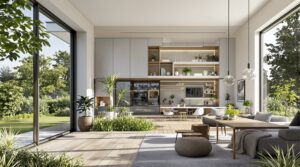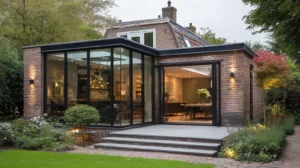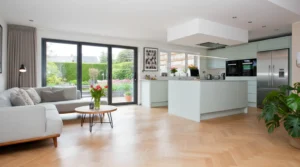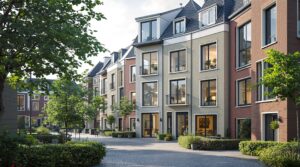Post-Pandemic Home Design: Adapting Spaces for New Lifestyles
Introduction
The COVID-19 pandemic has significantly impacted how we live, work, and interact within our homes. As we navigate the post-pandemic era, there is a growing need to adapt our living spaces to accommodate new lifestyles. In the Netherlands, where housing demand is high and space is limited, innovative home design solutions are becoming increasingly important. This article explores the trends, strategies, and practical tips for adapting Dutch homes to meet the demands of post-pandemic living.
Basic Concepts
Before diving into the specifics, it’s essential to understand some key concepts driving post-pandemic home design:
- Multi-activity Spaces: Homes must accommodate work, wellness, and entertainment.
- Modular Furniture: Furniture should be easily rearrangeable or repurposed.
- Flexible Living: Spaces should serve multiple functions for maximum utility and comfort.
- Sustainability: Environmentally friendly materials and practices are crucial.
Adapting Dutch Homes for New Lifestyles
Multi-Activity Spaces
- Office During the Day, Gym in the Afternoon: Convertible spaces for various purposes.
- Modular Furniture: Easily rearrangeable furniture for different tasks.
- Separate Rooms for Different Activities: Rooms should be interchangeable to maximize utility.
Flexible Living Spaces
- Temporary and Long-term Solutions: Utilize flexible housing solutions.
- Smart Use of Space: Consider urban and post-war neighborhoods for housing development.
- Modular, Prefabricated, and Sustainable Housing: Ensure compliance with regulations and sustainability.
Dutch Home Office Solutions
- Separate Office Spaces: Create a dedicated workspace.
- Adaptable Furniture: Use adjustable furniture for different tasks.
- Comfort and Functionality: Ensure ergonomic and distraction-free workspaces.
Pandemic-Inspired Home Renovations
Renovating Existing Homes
- Splitting, Topping Up, and Transforming: Convert existing buildings into homes.
- Environmental Benefits: Renovation has up to 85% lower CO2 emissions.
- Government Support: Subsidies and legal changes can encourage renovation.
Floating Homes
- Multifunctional Use of Space: Floating homes offer flood defense measures.
- Sustainable and Low-Tech: Stabilized by poles with shock-absorbent materials.
- Updating Zoning Laws: Changes to zoning laws facilitate floating home development.
Practical Tips for Home Renovations
Assess Your Needs
- Identify Multi-Activity Areas: Determine areas needing multiple uses.
- Choose Modular Furniture: Opt for adaptable furniture.
- Consider Sustainability: Use eco-friendly materials.
Plan for Flexibility
- Design for Adaptability: Create transformable spaces.
- Use Temporary Solutions: Temporary housing can be a short-term fix.
- Maximize Space Utility: Smart design and modular elements optimize space.
Seek Professional Advice
- Architects and Designers: Consult professionals for optimal post-pandemic design.
- Compliance with Regulations: Ensure adherence to building laws.
- Sustainable Practices: Work with experts on eco-friendly solutions.
Conclusion
The post-pandemic era has significantly changed home living and working. In the Netherlands, where space is limited, adapting homes is crucial. By incorporating multi-activity spaces, flexible solutions, and sustainable practices, homeowners can create functional and eco-friendly homes. Whether renovating existing properties, using modular furniture, or adopting innovative solutions like floating homes, the key is to design adaptable and sustainable spaces that meet modern needs.








